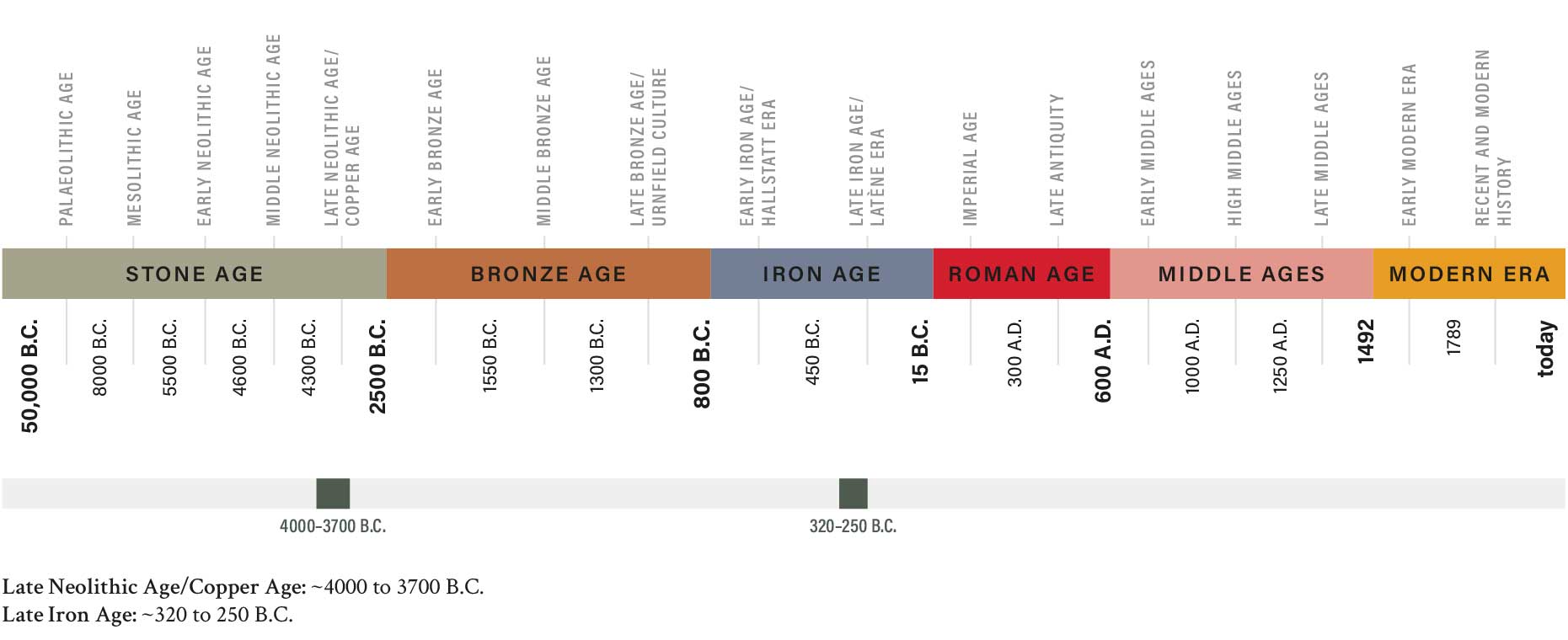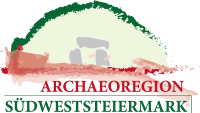
On a ridge between Lang and Schirka, which is clearly visible at the level of the A9 junction Lebring, looking the west, there is a burial ground hidden in the forest. It has been known for several decades and consists of twelve barrows, between which some flat graves are arranged. In addition to some detector prospecting, archaeological excavations were carried out in 2010 and 2021.
For a long time it was assumed that the tumuli were built in the Roman period (1st-3rd century AD). In the meantime, however, excavations have shown that we are dealing with a burial ground established between the 4th and 3rd centuries BC. This period is commonly referred to as the Celtic Period, Latène Period or Younger Iron Age.
During the 2010 excavations, four shallow graves were recovered and three others were noted. Flat grave 1 contained a sword, a spearhead, a shield boss, and a belt chain and wire brooch, all objects made of iron. Grave 4 showed, apart from the cremation, an iron, figure-eight braided belt chain; it may have been a woman’s grave. Next to it urn burial 5 was noted.
Flat grave 6 consisted of two mortuary cremations. In the first one a knife with a grindstone and two iron fibulae were found as grave goods, in the second one a belt chain. For all the graves mentioned we assume a dating to the LT C1 period (middle 3rd century B.C.).
During the 2021 excavations, the first Latène chariot grave from Styria, which had already been recovered in the 1970s, was re-examined and dated to the early to middle 3rd century BC (LT B2/C1). In this form of burial, parts of a warrior’s chariot, such as the wheel tires or the bridles, were placed in the grave as a burial gift.
As part of the 2021 excavation, mound 9 was explored in order to obtain information about the burial mounds. Three burials were uncovered in the outer area of the mound, although only one central burial had been expected. Thus, tumulus 9 from the Lang cemetery is the only Latène burial mound in southern Austria to date, which also has the distinction of housing a total of four burials.
Burial 1 consists of a pottery vessel with applied cordon decoration, in which at least one metal find is still present. Burial 2 is to the south of burial 1. It contains a ceramic urn and a bowl placed upside down on top of it, inside of which an eye handle knife and another metal object are kept, together with the cremated remains. Both graves can be dated to the distinct Early Latène period (LT B2, early 3rd century BC).
The third peripherally located grave with a rectangular burial pit is remarkable because it contained cremated debris from the funeral pyre as well as a large number of pottery fragments, among which several striking metal objects were found, among them a twisted silver wire bangle, a silver finger ring – both the first of their kind in Styria -, several fragments of an as yet unidentified bronze object as well as two fibulae. The latter are a fibula with a disc-shaped foot decoration of the Münsingen type, the disc of which was probably decorated with a coral overlay, and an object with a foot decoration in the shape of an acorn with a bowl made of iron and an inlay which may also have been made of coral. Finds of this kind were not known in Styria so far.
In addition to the metal finds, a remarkable ceramic object in Celtic ornamental form was recovered.
Text: Mag. Florian Mauthner

